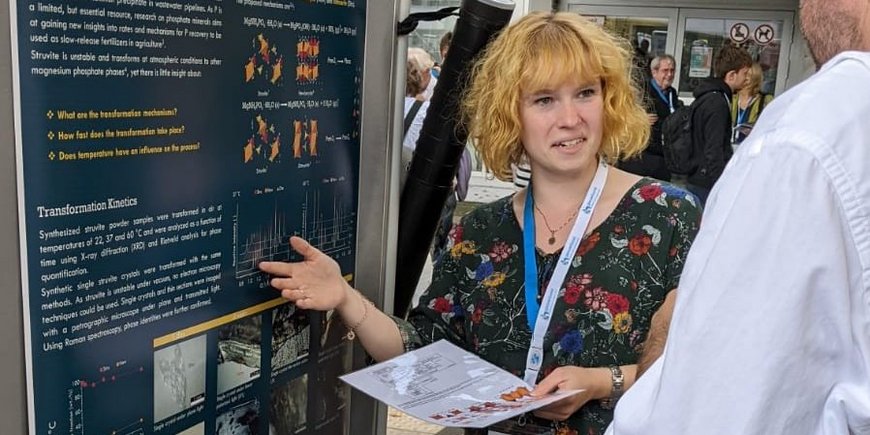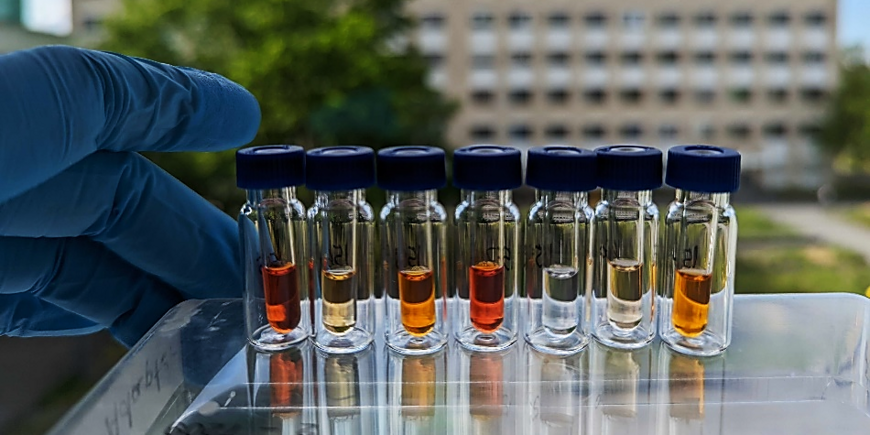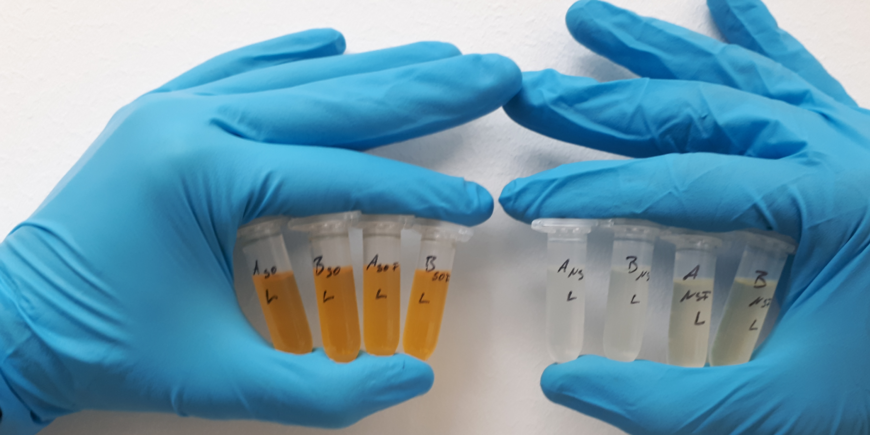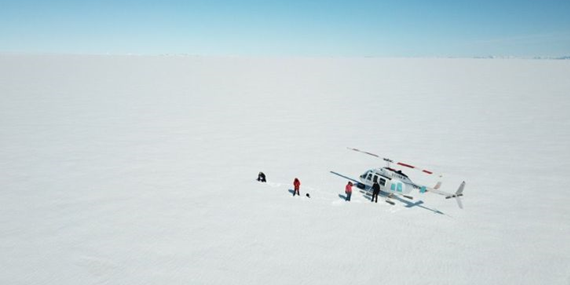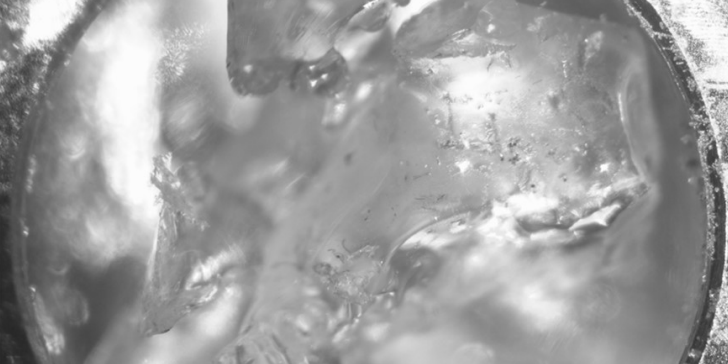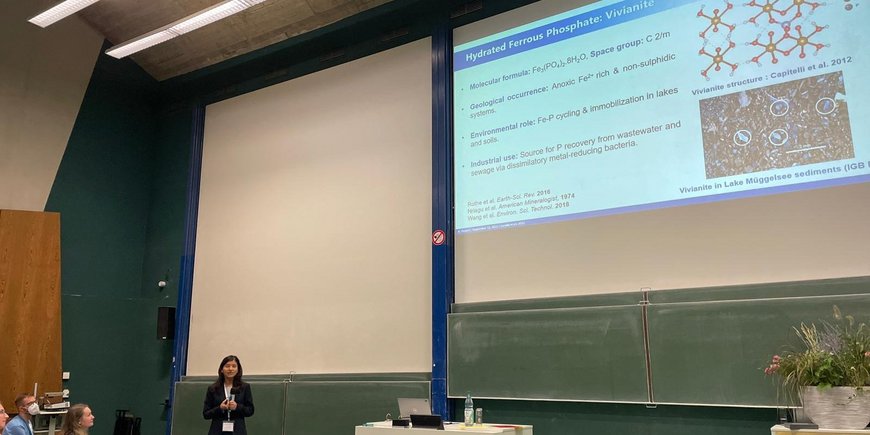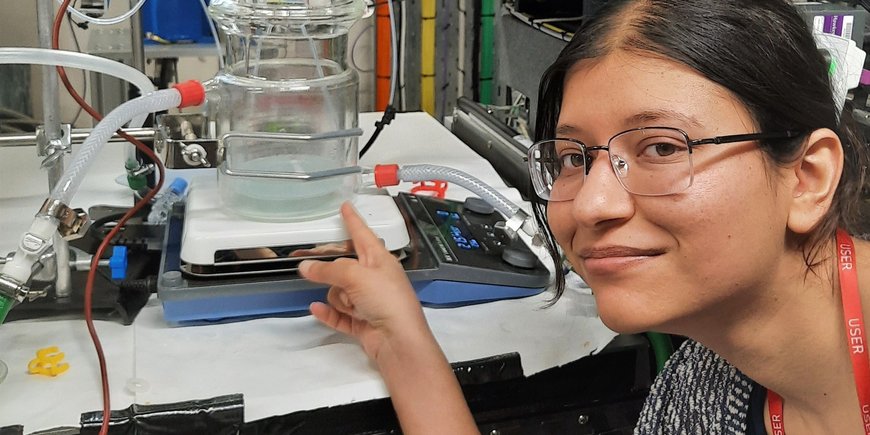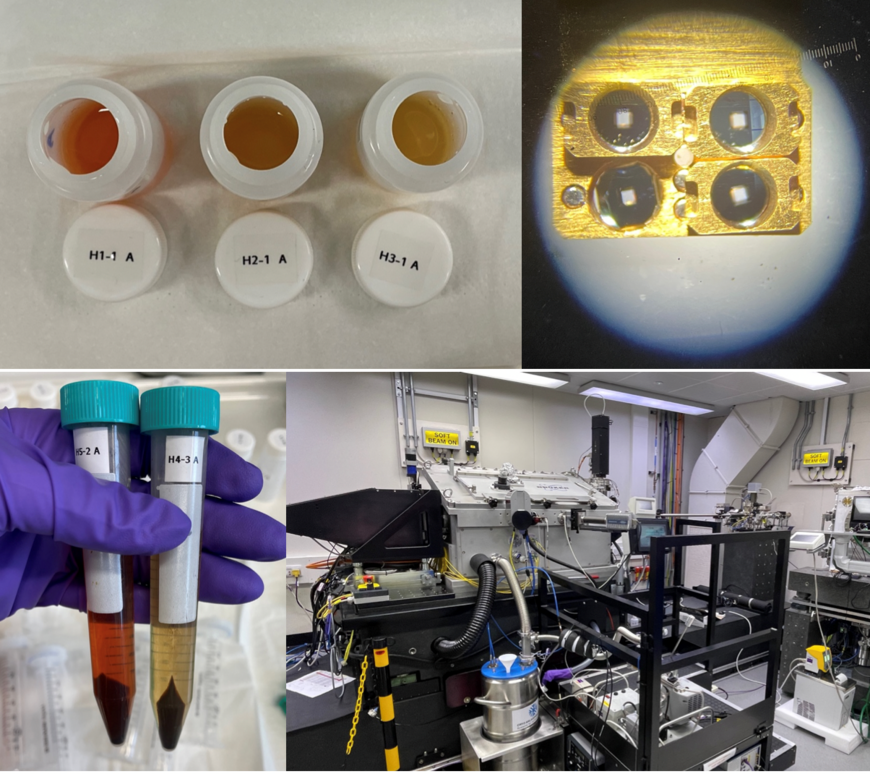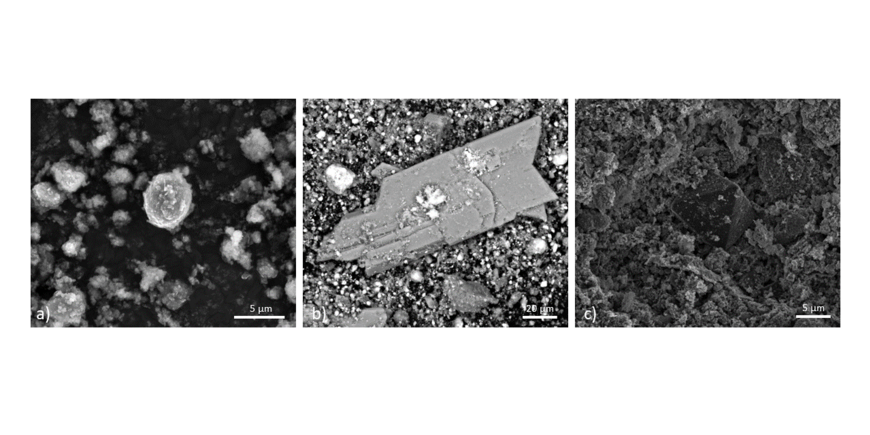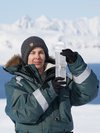2022 Forschungs-Updates
Doktoranden der Forschungsgruppe Grenzflächen-Geochemie werden halbjährlich über ihre bisherige Forschung berichten. Forschungs-Updates werden hier gepostet, sobald sie verfügbar sind. Updates werden nach Projekten kategorisiert.
Rebecca Volkmann
Rebecca Volkmann, November 2022: Presenting the current results of the doctoral project about the transformation of struvite (MgNH4PO4 · 6H2O) to the minerals newberyite (Mg(OH)PO4 · 3H2O) and dittmarite (MgNH4PO4 · H2O) at different temperatures and timescales on the GeoMinKöln 2022 conference.
Rebecca Volkmann, März 2022: Besides our research on nucleation and growth kinetics of the mineral struvite, a new direction has opened up in the project: We found out that struvite crystals transform to the mineral newberyite after some time in air. This phenomenon is known in the literature, but no systematic data on temperatures and timescales are available. So, the project now also includes to monitor the transformation kinetics of struvite to other phosphate minerals.
The image shows two struvite crystals that have been exposed to air for six months under the petrographic microscope. On the left side colourless under linear polarised light, the twinned struvite crystal shows colourful 2nd order interference colours under crossed polars in the right-hand sided image. Highly refractive, dark phases can be seen at the phase boundaries, that are probably newly formed newberyite.
Elisa Katharina Peter
Elisa Katharina Peter, August 2022: Within the Deep Purple project, I investigate pigmented microorganisms which inhabit the Greenland Ice Sheet and accelerate the ice melt due to surface darkening. I aim to improve our understanding of the factors controlling pigment formation by analyzing the metabolome and pigment profile of glacier ice and snow algae sampled under different environmental conditions. In the picture above, different colored extracts for lipidomic analysis of glacier ice algae samples via LC-MS/MS are shown. The color range of the extracts shows that the pigment composition is highly variable among different glacier ice and snow algae samples.
Elisa Katharina Peter, März 2022: Within the Deep Purple project, we investigate pigmented microorganisms which inhabit the Greenland Ice Sheet and accelerate the ice melt due to surface darkening. I aim to improve our understanding of the factors controlling pigment formation by analyzing the metabolome and pigment profile of glacier ice and snow algae sampled under different environmental conditions. A key aspect to this analysis is to achieve the highest possible extraction yield of the chemically diverse general metabolome as well as full extraction of the pigment profile in a reproducible manner. I have developed an adapted extraction protocol to achieve a high yield of carotenoids as well as the purple-brown pigment purpurogallin from glacier ice algae based on existing metabolome extraction methods. During method testing I discovered that the extraction of carotenoids could be significantly improved by adding the MTBE-MeOH extraction solvent prior to milling of the sample (left) compared to dry-milling with subsequent solvent addition (right).
Rey Mourot
Rey Mourot, September 2022: Air sampling allows us to determine the input of dust, microbes and particles on the Greenland Ice Sheet. This input is directly responsible for the microbial communities found in white snow, that we qualify as airborn. As usual, fieldwork in remote places asks for a cooperative work between our team and the local community. This picture was taken during the month of June 2022, while we – Helen Feord, Liane Benning, Katie Sipes (Aarhus University, Denmark) and myself – were taking snow, ice and air samples from the South Greenland Ice Sheet, near the QAS-U weather station. It was the first time that our team sampled these habitats before the start of the surface melt.
Rey Mourot, März 2022: Observing ice surfaces for studying the size of ice grains and the disposition of microbes presents numerous challenges. Among them, we can cite the risk to bring heavy and costly microscopes on the field; the melting and recrystallization ice undergoes when temperature changes and under the heating due to a microscope’s light, and the difficulty to presence samples from the field to the home laboratory to image them in optimal conditions. For my PhD projects, I sample the Greenland Ice Sheet ice surface and preserve the ice at -20 °C until observation at GFZ. This picture from a surface ice sample was taken from a binocular in the GFZ cold room, set at -5 °C.
Alice Paskin
Alice Paskin: In the past year, I have made significant progress in understanding the nucleation, growth and transformation of the ferrous phosphate mineral – vivianite. I wrote my first paper on the nucleation pathway of vivianite, which is currently under review. I presented my preliminary results – as a talk, in the conference of the German Mineralogical Society held in Cologne, Germany on September 2022 where I was financed by a student sponsorship of the European Association of Geochemistry (EAG). I also did some in-house measurements of in-situ XRD to see how my vivianite samples transform at higher temperatures, and also characterize this new phase. These results offered a broad understanding of vivianite stability and mineralogy. This project was my first venture into a more ‘mineralogy’ type of topic outside of ‘chemistry’ and also gave me a chance to learn about topics such as Rietveld refinements, thermogravimetric-differential scanning calorimetry (TGA-DSC) analyses, mineral alterations, and to apply this knowledge to my work. The results enabled me to write my second paper last year, which is currently being evaluated by my supervisor. I also wrote a successful beamtime proposal for the Diamond Light Source, United Kingdom, to perform in-situ SAXS / WAXS at I22 beamline, where I traveled, set-up and performed my experiments in December 2022, together with a team from GFZ. I am currently analyzing the data obtained from I22 at Diamond while deriving a detailed in-situ mechanism for the nucleation and growth of vivianite, to fit the final blocks of my puzzle.
Zhengzheng Chen
Zhengzheng Chen: In my second project, I studied the properties of soil cores collected along depth in Iceland to understand the effects of water log changes on the geochemical cycling of iron, carbon and phosphate. By using chemical extraction, the different iron phases were determined, while the iron-associated carbon and phosphate are also my focus. Scanning transmission X-ray microscopy (STXM) was used to visualize the interaction between iron and carbon at the nanoscale. I am looking forward to the research contributing to our insight into the challenges of soil organic carbon storage in the climate change situation.
Ruth Esther Delina
Ruth Esther Delina, September 2022: Nickel laterites are the world's main source of nickel. These deposits contain valuable metals like chromium which is also a potential toxic pollutant that can leach into surface- and groundwaters. Therefore, it is crucial to determine the processes that control its mobility.
On May 2022, we conducted a fieldwork in the Philippines, one of the world’s leading producers of nickel ore, to collect samples from active and rehabilitated Ni laterite mining and processing areas. I characterized these samples using standard mineral characterization techniques (e.g. XRD, SEM) as well as synchrotron-based spectroscopy to investigate the occurrence of Cr. Shown above are the SEM images of some of the Fe (oxyhydr)oxides and sulfates studied in this work (a - aggregate of hematite, b - gypsum, c - alunite).
Ruth Esther Delina, März 2022: I developed a new sequential extraction procedure tailored to Cr in Fe-rich soils and sediments and applied it to Fe-(oxyhydr)oxide dominated Ni laterites. The new scheme was optimized by testing the efficiency and selectivity of different extractants on synthetic and natural Cr- and Fe-bearing phases (e.g., goethite, hematite, chromite) representing commonly present minerals in Ni laterites. When applied to Philippine Ni laterites, the optimized method yielded Cr recoveries of up to 10x higher than currently used SEPs (see figure above). Complete dissolution of crystalline Fe phases using our method reveal that these minerals are one of the most significant pools for Cr in the Ni laterites, hosting 25-34% of total Cr. Existing SEPs underestimate this fraction (2-18% of total Cr) due to their inefficient dissolution of goethite and hematite. Aside from the more efficient dissolution of crystalline Fe minerals, our optimized method prevents the overestimation of organic matter bound Cr and quantifies strongly adsorbed Cr oxyanions. These improvements provide a better understanding of the potential environmental impacts of Cr in mining-impacted Fe-rich tropical areas.

